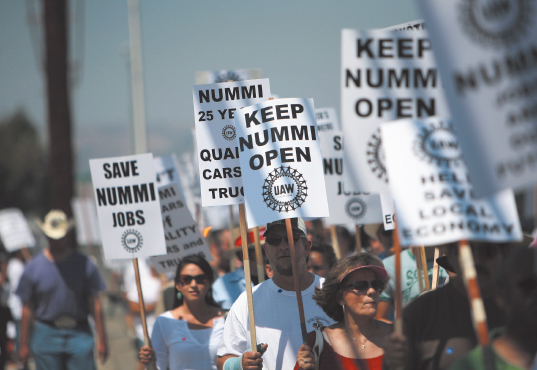Business Trends in Media Industries
Printed Page 458
Consolidation and digitization are not the only trends redefining the mass media business landscape. Additional trends shaping business overall have further affected the media economy. These include the growth of flexible markets and the decline of labor unions, as well as downsizing and a growing wage gap.

Flexible Markets and the Decline of Labor Unions
In today’s economy, markets are flexible—that is, business and consumer needs and preferences change continually and quickly. Companies seeking to increase profitability alter their products, services, and production processes as needed to satisfy specialized, ever-shifting demands. Making niche products for specialized markets is expensive, and most new products fail in the marketplace. To offset their losses from product failures, companies need to score a few major successes—such as a blockbuster movie or a game-changing handheld device. Large companies with access to the most capital—such as media powerhouses—can more easily absorb losses than small businesses with limited capital. Thus the powerhouses stand the best chance of surviving in today’s flexible markets.
To lower their costs and earn back their investments in product development, companies have begun relying heavily on cheap labor—sometimes exploiting poor workers in domestic and international sweatshops—and on quick, high-volume sales. Many U.S. companies now export manufacturing work, such as production of computers, CD players, TV sets, VCRs, and DVDs, to avoid the more expensive unionized labor at home. (Today, many companies outsource even technical and customer support services for their products.) As U.S. firms have gained access to alternative sources of labor, American workers’ power has decreased. Since the early 1980s, membership in labor unions has declined dramatically.
Downsizing and the Wage Gap
With the advantage to large companies in this age of flexible markets, the disadvantaged are the many workers who have lost their jobs as companies have “downsized” to become “more productive, more competitive, [and] more flexible.”4 Many people today scramble for paid work, often working two or three part-time and low-wage jobs. In his 2006 book The Disposable American, Louis Uchitelle noted unintended side effects of downsizing, including companies’ difficulty in developing innovative offerings after gutting their workforces. In the news media, reporting staffs have been downsized by more than 25 percent since the early 1990s. As a result, traditional news reporting has given way to other forms—such as online news sites and blogs.